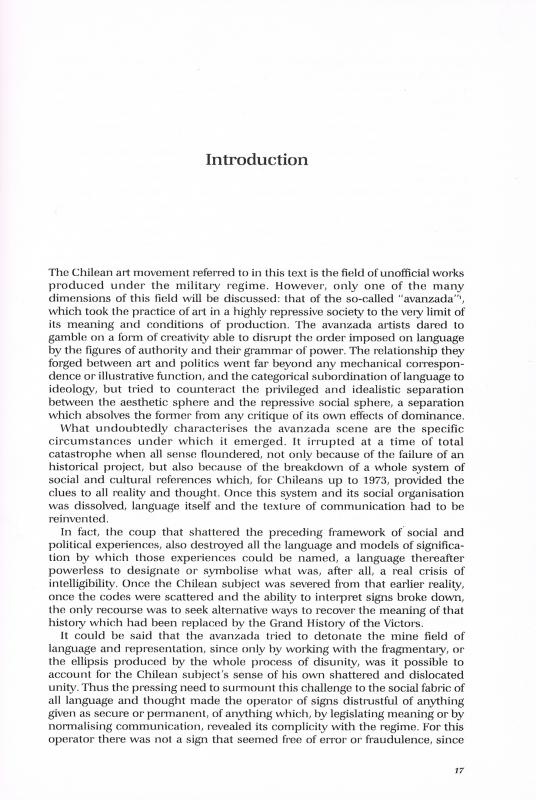"Lástima que seas una rota" [It’s a Shame You Are a Rota] is the title of an essay written by the writer and artist Diamela Eltit (b. 1949) for the catalogue for the exhibition of paintings by Juan Domingo Dávila (b. 1946). Rota was shown at the Galería Gabriela Mistral, an art space that opened in Santiago in 1990 during the first administration of what was known as the Democratic Transition. Though it is called a “gallery,” it is not a commercial space; it is a government art exhibition salon. [For a different text about the exhibition, see the ICAA Digital Archive: “Identidad y escatología” (doc. no. 738654) written by Carlos Pérez.]
A year after the military coup d’état (1974), Juan Domingo Dávila moved to Melbourne, Australia, but stayed in touch with people in Chile, especially with the theorist and cultural critic Nelly Richard (b. 1948). The author of Margins and Institutions. Art in Chile since 1973 (1986), Richard included him in the Escena de Avanzada, a neo-avant-garde group of artists whose works and practices challenged art, the production of art, and art’s place and purpose in a country that was in the iron grip of a dictatorship. The movement or trend set out to produce a counter-institutional kind of art designed to stimulate a critical awareness of resistance. The group’s art practices thus relied on linguistic efforts to unseat the dominant culture. Dávila arranged for the international art magazine Art and Text (Melbourne/New York) to publish Richard’s book in a special issue. [Regarding the chapter about painting in Margins and Institutions, see the following in the ICAA Digital Archive: “Introduction” (doc. no. 738523).] Dávila was also on the editorial board of the Revista de Crítica Cultural, the magazine that Richard directed from 1990 to 2008.
After 1974, Dávila had one-man shows in Chile every now and then. Rota was his first exhibition of this kind since the return of democracy and his paintings on this occasion were focused on the “roto,” a classist Chilean word for poor people who have been depicted in literature since the early twentieth century and have become a typical figure in the country’s tradition. In his paintings, Dávila uses different versions of the character that have appeared in national magazines to insert it into Chilean art history. He also paints his “rotos” with female bodies so that they are not only members of a minority lower class but are also looked down upon by the country’s patriarchal social structure.

